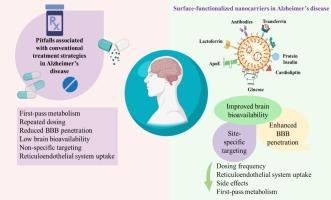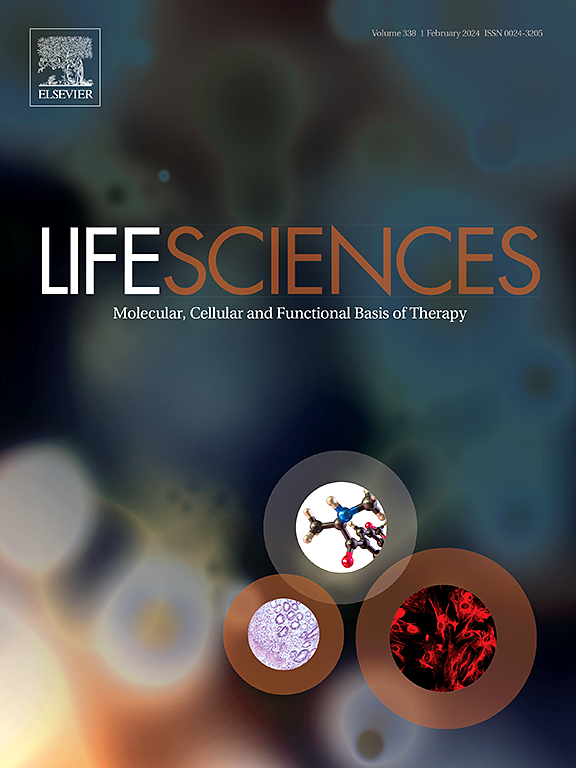Surface engineered nano architectonics: An evolving paradigm for tackling Alzheimer's disease
IF 5.2
2区 医学
Q1 MEDICINE, RESEARCH & EXPERIMENTAL
引用次数: 0
Abstract
As per the World Health Organization (WHO) estimation, Alzheimer's disease (AD) will affect 100 million population across the globe by 2050. AD is an incurable neurodegenerative disease that remains a mystery for neurologists owing to its complex pathophysiology. Currently, available therapeutic regimens will only cause symptomatic relief by improving the cognitive and behavioral functions of AD. However, the major pitfalls in managing AD include tight junctions in the endothelial cells of the blood-brain barrier (BBB), diminished neuronal bioavailability, enzymatic degradation and reduced stability of the therapeutic moiety. In an effort to surmount the drawbacks mentioned above, researchers shifted their focus toward nanocarriers (NCs). Nevertheless, non-specific targeting of NCs imparts toxicity to the peripheral organs, thereby reducing the bioavailability of therapeutic moiety at the target site. To unravel this unmet clinical need, scientists came up with the idea of a novel intriguing strategy of surface engineering by targeting ligands. Surface-decorated NCs provide targeted drug delivery, controlled drug release, enhanced penetration and bioavailability. In this state-of-the-art review, we have highlighted in detail various molecular signalling pathways involved in AD pathogenesis. The significance of surface functionalization and its application in AD management have been deliberated. We have elaborated on the regulatory bottlenecks and clinical hurdles faced during lab-to-industrial scale translation along with possible solutions.

表面工程纳米结构:应对阿尔茨海默病的不断发展的范例。
据世界卫生组织(WHO)估计,到 2050 年,阿尔茨海默病(AD)将影响全球 1 亿人口。阿尔茨海默病是一种无法治愈的神经退行性疾病,由于其复杂的病理生理学,对神经学家来说仍然是一个谜。目前,现有的治疗方案只能通过改善 AD 的认知和行为功能来缓解症状。然而,治疗 AD 的主要缺陷包括血脑屏障(BBB)内皮细胞的紧密连接、神经元生物利用度降低、酶降解和治疗分子稳定性降低。为了克服上述缺点,研究人员将重点转向了纳米载体(NC)。然而,NCs 的非特异性靶向性会给外周器官带来毒性,从而降低治疗药物在靶点的生物利用度。为了解决这一尚未满足的临床需求,科学家们想到了一种新颖有趣的策略,即通过靶向配体进行表面工程。经表面装饰的数控系统可实现靶向给药、控制药物释放、增强渗透性和生物利用度。在这篇最新综述中,我们详细介绍了参与艾滋病发病机制的各种分子信号通路。我们还讨论了表面功能化的意义及其在注意力缺失症治疗中的应用。我们还阐述了从实验室到工业规模转化过程中面临的监管瓶颈和临床障碍,以及可能的解决方案。
本文章由计算机程序翻译,如有差异,请以英文原文为准。
求助全文
约1分钟内获得全文
求助全文
来源期刊

Life sciences
医学-药学
CiteScore
12.20
自引率
1.60%
发文量
841
审稿时长
6 months
期刊介绍:
Life Sciences is an international journal publishing articles that emphasize the molecular, cellular, and functional basis of therapy. The journal emphasizes the understanding of mechanism that is relevant to all aspects of human disease and translation to patients. All articles are rigorously reviewed.
The Journal favors publication of full-length papers where modern scientific technologies are used to explain molecular, cellular and physiological mechanisms. Articles that merely report observations are rarely accepted. Recommendations from the Declaration of Helsinki or NIH guidelines for care and use of laboratory animals must be adhered to. Articles should be written at a level accessible to readers who are non-specialists in the topic of the article themselves, but who are interested in the research. The Journal welcomes reviews on topics of wide interest to investigators in the life sciences. We particularly encourage submission of brief, focused reviews containing high-quality artwork and require the use of mechanistic summary diagrams.
 求助内容:
求助内容: 应助结果提醒方式:
应助结果提醒方式:


